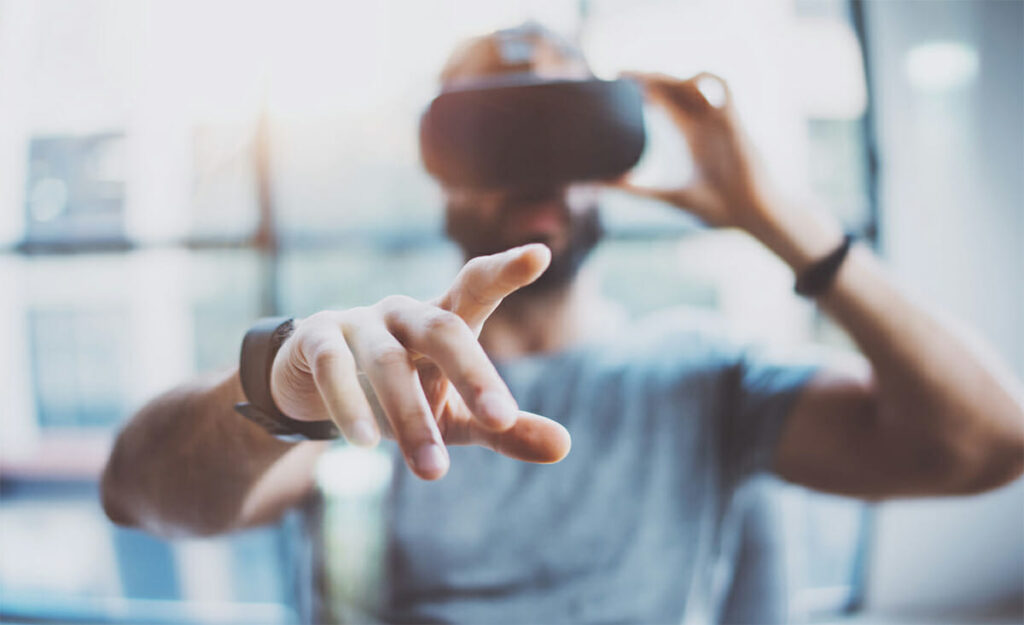I recently picked up an Oculus Rift; yes, we’re talking about virtual reality. The price is incredibly affordable and the content is vast and available, so I figured what the heck.
 I experienced VR a couple years ago at a networking event. They had a computer with a powerful graphics card, and at that time there were very few applications to use. It was very early in development. I remember putting on a headset and immediately was transported to the front seat of a roller coaster. I looked around and saw the stars in the sky, the ground below me, and looked in front of me as the roller coaster slowly lifted me higher and higher. For some reason as I got higher and higher, I felt more and more anxious and afraid. The kind of feelings I get when I am on an actual roller coaster.
I experienced VR a couple years ago at a networking event. They had a computer with a powerful graphics card, and at that time there were very few applications to use. It was very early in development. I remember putting on a headset and immediately was transported to the front seat of a roller coaster. I looked around and saw the stars in the sky, the ground below me, and looked in front of me as the roller coaster slowly lifted me higher and higher. For some reason as I got higher and higher, I felt more and more anxious and afraid. The kind of feelings I get when I am on an actual roller coaster.
Once it got to the top, I heard a “snap!” I looked behind me and saw the cable to the cart that was lifting me up let go, and was suddenly struck with fear. I started descending at a faster and faster rate and felt my stomach go into my chest as my brain thought my body is falling towards the earth. I gripped the table in front of me and held on because I was about to fall over. I kept thinking to myself “Ok, you are standing on the ground in an office. You are not actually on the roller coaster. This isn’t actually happening.” But no matter how often I told myself that, I couldn’t help getting the sensations I was moving around that roller coaster track at high speeds.
When the ride ended and I took off the headset, I had sweat running down my neck, my heart rate was elevated, and it took me a couple seconds for my brain to switch back to reality.
Most have heard about virtual reality by now and how it’s immersive nature is unlike any other medium yet. It used to be the stuff of fiction but is actually here now.
 A large part can be attributed to mobile devices. Google Cardboard created a holder for your phone so you can turn a smartphone into a virtual reality headset. Also, Facebook acquired Oculus Rift and dropped the price for a full virtual reality system you can use with your computer, making it more within reach. Even within the next year, there are products being launched that make VR even better, more affordable, and easier.
A large part can be attributed to mobile devices. Google Cardboard created a holder for your phone so you can turn a smartphone into a virtual reality headset. Also, Facebook acquired Oculus Rift and dropped the price for a full virtual reality system you can use with your computer, making it more within reach. Even within the next year, there are products being launched that make VR even better, more affordable, and easier.
Data from Google showed that global search interest for virtual reality has grown nearly 4x in the last year.
If you have not experienced it yet, it might not be of significance to you. If you have, however, you understand the incredibly immersive experience it gives you. When you have a headset like the Oculus Rift or HTC Vibe, you put on the headset, have headphones, and grab the controllers, you feel like you are there. You can reach your hand out and touch something. You can walk through worlds. What VR does is it puts you somewhere else. It makes your mind feel like you are in another place. It seems like we as content creators are closer than ever to building experiences that are only limited by our imaginations.
If you are able to be transported anywhere, think about it. Front row seats at your favorite concert venue, racing in Nascar, or visiting the northern lights just by putting on a headset. It could also capture events in history, so in the future, we can revisit and it will be like we are actually there, experiencing it for ourselves, without someone’s own perspective and bias skewing the reality.
Talk about an incredibly deep engagement for the viewer.
What does this mean for brands?
Ericsson ConsumerLab did a study and found out that shopping is one of the main reasons consumers would be interested in VR. Actually being able to pick up the item, see the size and shape. You can create a 3D selfie to match your own body and try on clothes. Car companies can put you in the driver’s seat. You can interact with the new interior, walk around the car and experience it for yourself.
Brands who are at the forefront of this technology will be the ones prepared when VR becomes even more consumer friendly. As we all know, early adopters are the ones that come out in front.
Bottom line, VR is an incredibly powerful tool to create empathy. When the viewer feels like they are there, they get a very powerful sense of what it is actually like. The messages we create will become much more powerful.







